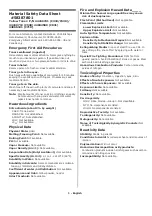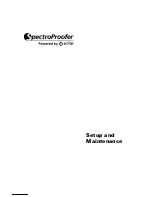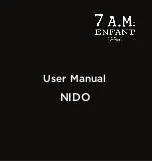
E T X S E R I E S L I T H I U M B A T T E R I E S
1
Overview
EarthX Lithium batteries are designed as a maintenance free replacement for the 12-volt
lead-acid or lithium starter batteries. The Starting Battery (Function) is considered Primary
in the electrical system for Category I and II part 23 Aircraft. The alternator charging system
is considered secondary. Per 14 CFR 23.1309-1E and TSO-C179b, the Failure Condition
Classification (FCC) for this TSO Battery is “Major” - unless other installations deem the
analysis lessor or greater, dependent on the function in the particular installation Aircraft.
This manual covers the TSO Article (Part) installation aspects for the ETX900-TSO Battery
to be installed on 14 CFR part 23 Aircraft. Refer to AC 20-184 for full Aircraft installation
guidance and requirements not the subject of this manual. This manual is an accompanying
manual to Instructions for Continued Airworthiness (ICA) manual.
Failure to follow all application use, installation, charging, and storage instructions may result
in battery damage and or fire!
Technology Inside
Battery Cells
Our batteries use cells made of Lithium Iron Phosphate (LiFePO
4
). This chemistry is one of
the highest performance and safest on the market today.
Lithium batteries are fundamentally different than lead-acid batteries. A lithium battery
voltage remains relatively constant while discharging, while voltage for a lead-acid battery
decreases. As such, 16Ah lithium battery has the equivalent “useable” capacity to a 22Ah
lead-acid. Also, a lithium battery’s cranking power is stronger, for the voltage while cranking
is generally higher.
LiFePO
4
cells by the nature of their chemistry are 3.3 volt. 12V lithium batteries are created
by using 4 cells in series (technically it is a 13.2-volt battery, but nominally full charge voltage
is >13.3V). Lead-acid batteries are made with 6 cells in series. Another difference is that
lithium cells are a dry cell technology, where the cells are packaged individually. As such, the
individual cell’s charge level will diverge with repeated charge/discharge cycles and age. This
condition reduces the performance of the battery (reduces capacity), for the battery charge
level is only as good as the charge level of the weakest cell.
BMS
EarthX’s integrated Battery Management System (BMS), part number BMS_DR, monitors
each cell’s voltage as part of the cell balancing and over-charge protection. If the voltage of
a cell exceeds the others, the BMS circuits will work to reduce that cell’s charge level. This
ensures that the charge level of all the cells remains equal, even with the high discharge (>
100Amps) and charge current (>10Amps) of your aircraft.





































